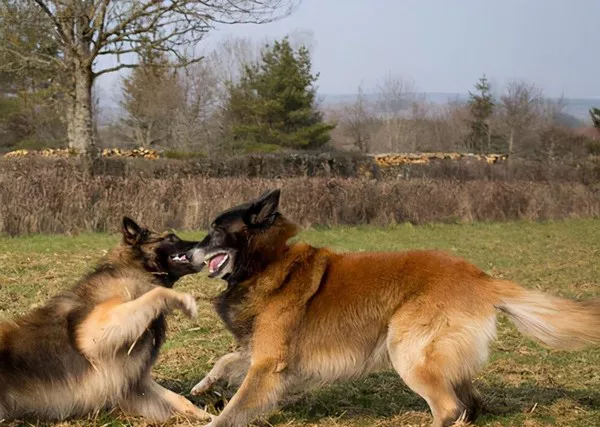Snakes are fascinating creatures that often evoke curiosity and sometimes fear. Among the many species, the hognose snakes stand out due to their unique appearance and interesting behaviors. For many pet enthusiasts and reptile lovers, hognose snakes are appealing because they are generally considered harmless and make great pets. But which hognose snakes are truly harmless? How can you tell the difference between harmless and potentially dangerous snakes? This article explores the hognose snake species, their characteristics, behaviors, and why they are widely regarded as safe, non-venomous reptiles.
Understanding Hognose Snakes: What Makes Them Unique?
What is a Hognose Snake?
Hognose snakes belong to the genus Heterodon, which includes several species native primarily to North and Central America. Their most recognizable feature is their upturned snout, which resembles a pig’s nose—hence the name “hognose.” This distinct nose shape helps them dig in sandy soil or leaf litter to hunt for prey such as amphibians and small rodents.
Physical Characteristics
- Snout: The upturned “hog” nose is used for burrowing.
- Size: Most hognose snakes range from 18 to 40 inches in length.
- Coloration: They come in various colors and patterns, including brown, gray, yellow, and orange, often with blotches or spots.
- Scales: Their scales are keeled, giving them a rough texture.
Species Overview
The three most common species of hognose snakes are:
Eastern Hognose Snake (Heterodon platirhinos)
Found primarily in the eastern United States, this species varies widely in color and is famous for its dramatic defensive behaviors.
Western Hognose Snake (Heterodon nasicus)
Native to the central United States, this species is popular among reptile pet owners because of its manageable size and calm demeanor.
Southern Hognose Snake (Heterodon simus)
Less common in the pet trade, found in the southeastern U.S., and generally similar in behavior to its relatives.
Are Hognose Snakes Harmless?
Venom and Toxicity
One of the primary concerns people have about snakes is venom. Many snakes are venomous and can be dangerous to humans and pets. However, hognose snakes are generally considered non-venomous to humans.
- Hognose snakes produce a mild venom that is effective on their prey (mainly amphibians like toads) but is harmless to humans.
- Their venom glands are small, and the venom is delivered in a very mild way—if at all—because their fangs are located in the rear of their mouth (rear-fanged).
- Most people do not experience any symptoms after a hognose snake bite. Some might have minor irritation or swelling, similar to a bee sting.
Defensive Behaviors That Mimic Danger
Despite being harmless, hognose snakes have fascinating defense mechanisms that can make them seem dangerous:
- Flattening their neck: Like cobras, they can flatten their necks to appear larger.
- Hissing loudly: They produce a loud hissing sound to intimidate predators.
- Feigning death: When threatened, they may roll over, open their mouths, and appear dead, often with their tongues hanging out.
- Bluff striking: They may strike with a closed mouth as a warning, but they rarely bite.
These behaviors are bluff tactics, not real aggression. The snake is trying to scare off threats, not harm.
Why Are Hognose Snakes Considered Good Pets?
Temperament
Hognose snakes are known for their relatively docile nature. They tolerate handling well when accustomed to it and do not generally show aggressive tendencies. Their defensive behaviors are more about bluffing than actual attack.
Size and Care
- Their moderate size makes them manageable for most snake owners.
- They have simple habitat requirements: a terrarium with appropriate substrate for burrowing, stable temperature, and humidity levels.
- They feed on amphibians, small rodents, and sometimes fish in captivity, making them easy to feed.
Lifespan
Hognose snakes can live between 12 to 15 years in captivity with proper care, which is a reasonable commitment for a pet snake.
Detailed Look at the Common Harmless Hognose Snakes
Eastern Hognose Snake (Heterodon platirhinos)
- Habitat: Forests, fields, and sandy areas in eastern U.S.
- Appearance: Colors vary—brown, gray, yellow, with blotches.
- Size: Typically 20 to 36 inches.
- Behavior: Known for dramatic threat displays, including flattening the neck and playing dead.
- Venom: Mildly venomous to prey, but harmless to humans.
Western Hognose Snake (Heterodon nasicus)
- Habitat: Prairies, grasslands, and semi-arid regions in central U.S.
- Appearance: Tan, yellow, or brown with darker spots; often a lighter belly.
- Size: Usually 14 to 24 inches.
- Behavior: Generally calm, less dramatic than eastern species but still exhibits bluffing.
- Venom: Mildly venomous to prey, harmless to humans.
Southern Hognose Snake (Heterodon simus)
- Habitat: Sandy soils in the southeastern U.S.
- Appearance: More uniform in color, brown or reddish with some pattern.
- Size: Smaller, around 14 to 20 inches.
- Behavior: Similar defensive tactics.
- Venom: Harmless to humans.
Differentiating Harmless Hognose Snakes from Potentially Dangerous Snakes
Identifying Features
- The distinctive upturned snout is a reliable marker for hognose snakes.
- The head shape is wider than the neck when flattened but not as distinctly triangular as venomous pit vipers.
- The defensive behavior includes bluffing, not real aggression.
Venomous Look-Alikes
In some regions, venomous snakes may be confused with hognose snakes. For example:
- Copperheads and Cottonmouths (water moccasins): These have distinctly triangular heads, vertical pupils, and lack the upturned snout.
- Coral snakes: They are brightly colored but have smooth scales and a different body shape.
Knowing these differences can prevent misidentification and unnecessary fear.
Hognose Snakes in the Wild
Role in the Ecosystem
Hognose snakes play an essential role in controlling populations of amphibians, rodents, and insects. By keeping toads and small animals in check, they maintain a balance in their habitats.
Conservation Status
Most hognose snakes are not endangered, though habitat loss and road mortality can affect local populations. They are often protected by law in some states to prevent over-collection.
Caring for a Hognose Snake as a Pet
Habitat Setup
- Enclosure: A secure glass terrarium, minimum size 20 gallons.
- Substrate: Loose soil, sand, or aspen shavings to allow digging.
- Temperature: 75-85°F during the day, with a cooler side at night.
- Humidity: Moderate; avoid excessive moisture.
- Lighting: Not strictly necessary but natural light cycles help regulate behavior.
Feeding
- In captivity, western hognose snakes typically accept frozen-thawed mice.
- Eastern hognose snakes prefer amphibians but can be trained to eat mice.
- Feeding should be done once or twice a week, depending on the snake’s age and size.
Handling Tips
- Approach calmly and confidently.
- Support the snake’s body fully.
- Avoid handling right after feeding to prevent regurgitation.
- Respect their defensive behaviors; if they hiss or play dead, give them time to calm down.
Common Myths About Hognose Snakes
Myth 1: Hognose Snakes Are Venomous and Dangerous
Fact: While mildly venomous to prey, they pose no real threat to humans.
Myth 2: They Will Aggressively Attack Humans
Fact: They prefer to bluff and avoid confrontation. Actual biting is rare.
Myth 3: They Are Difficult to Care For
Fact: They have straightforward care needs and are suitable for beginner snake keepers.
Conclusion
Hognose snakes are among the most charming and harmless snakes you can encounter, whether in the wild or as a pet. Their unique appearance, gentle temperament, and fascinating behaviors make them beloved by reptile enthusiasts worldwide. The most common hognose species—Eastern, Western, and Southern—are all harmless to humans and present minimal risk. They use bluffing tactics for defense rather than aggression, and their mild venom is not a danger to people.
For anyone interested in keeping a snake as a pet or simply understanding these remarkable reptiles, hognose snakes offer an excellent example of how a creature can look intimidating but be completely safe. Proper care and respect for their behaviors ensure a positive relationship between humans and these harmless hognose snakes.
Related Topics:





















